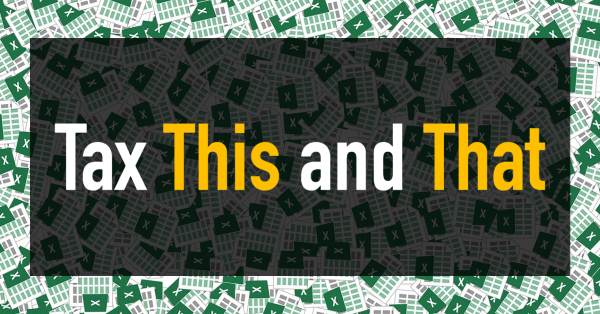Tax This and That

Earned Income Tax Credit (EITC):
If your earned income was higher in 2019 than in 2020, you can use the 2019 amount to figure your EITC for 2020. This temporary relief is provided through the Taxpayer Certainty and Disaster Tax Relief Act of 2020.
However, in order to make this election, the taxpayer MUST have qualifying earned income in 2020. If the taxpayer does not have qualifying earned income in 2020, then they are not eligible for the earned income tax credit.
Taxpayer Advocacy Services (TAS):
Due to the IRS delays in processing paperwork, TAS is not working any claims for documents filed after July 15, 2020 at this time. For paper documents filed prior to July 15, 2020 they may be able to help taxpayers, however, they may be recommending that the documents be re-filed. This is somewhat of an unusual step for the IRS as they generally do not recommend that taxpayers file documents twice as that may delay the processing time. But for paper-filed documents submitted prior to July 15, 2020 and not showing up in the system – that is the recommendation at this time.
Net Operating Losses (NOLs):
The CARES Act provides that NOLs arising in a taxable year beginning after December 31, 2017 and before January 1, 2021 shall be treated as a carryback to each of the 5 preceding taxable years unless the taxpayer elects to forego the carryback. Thus, NOLs arising in 2018, 2019 and 2020 could be carried back as far as 2013, 2014, and 2015, respectively. This carryback right can be extremely valuable as the maximum corporate tax rate applicable to tax years ending before 2018 was 35%, much higher than the current 21%.
The carryback provision of the CARES act is automatic; the taxpayer must elect to waive the carryback on the 2020 tax return. A special provision (see Chief Counsel Advice Memorandum 201919012) provides that the election to forgo the carryback period for 2018 and 2019 can be made on the 2020 tax return, along with the election to forgo the carryback for 2020. If the tax return for the individual or the business entity has already been filed without including the election to waive the carryback period, an amended return can be filed provided a timely tax return was filed for the year the election should have been made, and corrective action is taken within the 6-month extension period.
Employee Retention Tax Credit (ERTC):
The ERTC was originally included in the Coronavirus Aid, Relief, and Economic Security (CARES) Act, but it was not widely used because initially, businesses could not take advantage of both the Paycheck Protection Program (PPP) and the ERTC. But Congress revised this provision in December 2020 (with the Consolidated Appropriations Act (CAA)), with the result that many more companies may now qualify to receive PPP loans and use the ERTC. The same wages cannot be used for both provisions, but once the wages have been identified for the PPP loan forgiveness; other wages may provide eligibility for the ERTC.
A new Form 941-X was released in order to amend prior quarter payroll tax forms in order to amend the applicable quarters in 2020 where the employer had eligible wages for the ERTC.
A question recently came up at the NSTP Town Hall meeting regarding the reporting of the ERTC when filing the Form 941-X. Specifically, is the credit adjustment reported in 2020 towards the applicable payroll reported on the amended payroll return or, for a cash basis taxpayer, is the credit adjustment reported on the 2021 tax return when the credit is received?
A call to counsel in the employment payroll division, the section that wrote Notice 2021-20, provided no definitive answer. The issue has been elevated to the income tax division who has yet to issue guidance.
From a payroll standpoint, generally any adjustment reported on the Form 941-X is reported for the period on which the 941-X is filed. If the taxpayer takes the conservative approach and reports the credit adjustment on the 2020 income tax return, then it is a matter of a timing difference if the income tax division determines it can be reported on the 2021 income tax return. However, if the taxpayer elects to report the credit adjustment on the 2021 income tax return and counsel determines it should have been reported on the 2020 return then they may face penalties and interest for understatement of their 2020 tax liability.
Be sure your client understands all the tax implications of their decision on when to report the credit adjustment and document the file accordingly.




